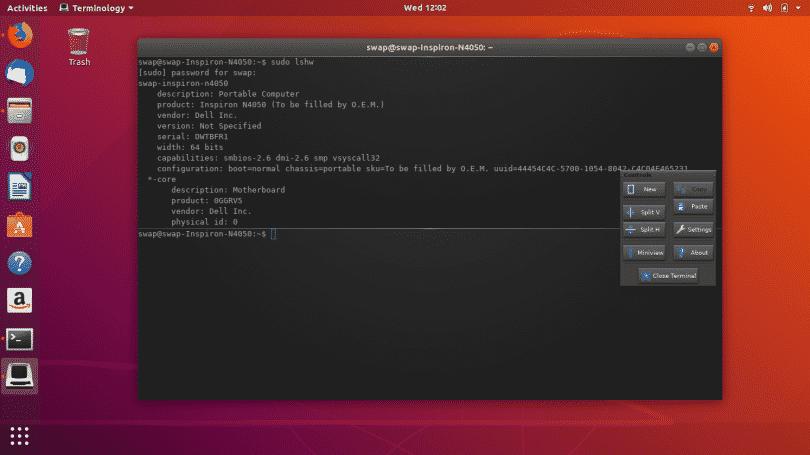
Additionally, you will primarily be using Git within the command line (more on this later).

#LINUX UBUNTU OPEN TERMINAL INSTALL#
You will be making heavy use of the command line throughout this curriculum, and the upcoming installations project will need you to install many different software programs using the command line. Now that you are aware of what $ does, take your terminal for a test run! Make sure your terminal is open, type the command mentioned above, and press Enter on your keyboard. This is a common indicator so make sure that you aren’t entering $ before a command. In the example above, we would only enter whoami in our terminal. The $ is saying “Hey! Enter what follows in your terminal.” This means that we must exclude the $ when entering any command. This is a terminal command because it begins with a $. Press Enter to open it.īefore we do anything, take a look at the following text: Press Cmd + Space to open Spotlight, and search for “Terminal”. You can also use Spotlight search to open Terminal. MacOS: Open your Applications > Utilities folder and find “Terminal”. You can also open the terminal by pressing Ctrl + Alt + T on your keyboard. Linux: Open the programs menu and search for “Terminal”. So don’t let the prospect of using the command line for the first time intimidate you. The commands you will learn in this lesson are very straightforward.

You’ll soon see that this isn’t as difficult as you may think.
#LINUX UBUNTU OPEN TERMINAL HOW TO#
In this introductory lesson to the command line, you’ll learn how to navigate around your computer and how to manipulate files and directories (also known as folders) directly from the comfort of the command line. It has a syntax of its own to learn, but since you’ll be entering the same commands dozens of times, you’ll quickly pick up the commands you need most. The command line is like our base of operations, from which we can launch other programs and interact with them. While there’s no need for you to reenact the scene above, working with the command line is a critical skill for you to learn as a developer. That black screen or window is the command line interface (CLI), where you’re able to enter commands that your computer will run for you. We have this image of developers staring intently at a black screen with white or green text flashing across as they wildly enter incomprehensible commands to hack into the corporate mainframe (no doubt while guzzling soda and wiping neon orange Cheetos dust off their keyboard). Move around your file system with cd, view files in the current directory with ls, create directories with mkdir, and manage files with the rm, cp, and mv commands.Feeling scared of the command line? You’re not alone. This may be a bit overwhelming at first, but these are the basic commands you need to master to effectively work with files in the terminal. For example, mv original renamed moves a file named original in the current directory to a file named renamed in the current directory, effectively renaming it. It works exactly like the cp command above, but moves the file instead of creating a copy.

cp - The cp command copies a file from one location to another.For example, rm example removes the file named example in the current directory and rm /home/you/Downloads/example removes the file named example in the Downloads directory. mkdir example would create a new directory named example in the current directory, while mkdir /home/you/Downloads/test would create a new directory named test in your Downloads directory. mkdir - The mkdir command makes a new directory.
:max_bytes(150000):strip_icc()/Screenshotfrom2018-09-1417-03-25-5b9c30abc9e77c0050ab449e.png)


 0 kommentar(er)
0 kommentar(er)
